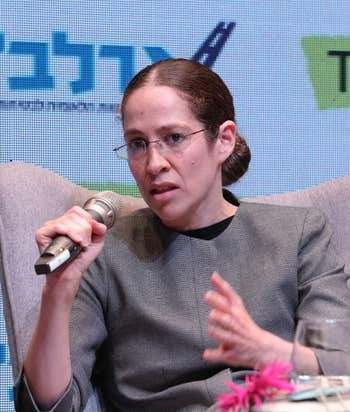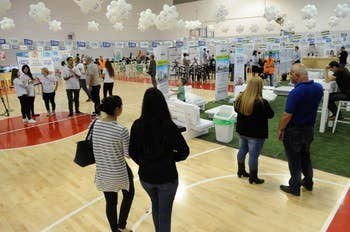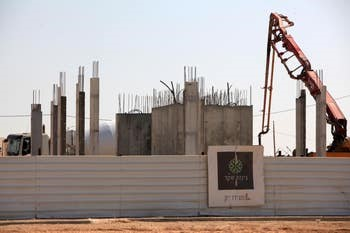The Marker, Hadar Horesh, 09.11.2020
A price-per-tenant program is dying out, and young couples are turning to buying an apartment on the free market - this is the conclusion that emerges from the housing market survey for September, published by the chief economist at the Ministry of Finance, Shira Greenberg.
The program's activity has been almost completely stopped in the past year, after a significant decline in tenders and lotteries in the last two years. In the past year, the reduction in activity has led to a significant reduction in the weight of subsidized apartments in the housing market, sending many young couples into the free market - despite their apparent entitlement to purchase a subsidized apartment under the program. The transition of young couples to the free market is part of the explanation for the continued sharp demand and price increases in the housing market, even during the Corona crisis.
The number of apartments sold as part of the price per occupant in September is only 1,100 - a drop of 47% compared to September last year, and a decrease of 28% compared to the previous month. Also in August there were relatively few purchases under the program - with numbers similar to those of August 2019 - in parallel with a 25% increase in purchases by young couples in the free market.
The young couples purchased a total of 4,700 apartments in September (within and outside the program) - a reduction of 9% compared to September 2019, and an increase of 11% compared to the previous month. However, after deducting price-per-tenant purchases, the number of purchases by young couples in the free market climbed by 15%, compared to September 2019, and decreased by 4% compared to the previous month.
 Shira Greenberg, Chief Economist of the Ministry of Finance Photo: Shauli Landner
Shira Greenberg, Chief Economist of the Ministry of Finance Photo: Shauli Landner
Another surprise that emerges from the review is the stability in the sales of apartments in the market in September, despite the Tishrei holidays and the second closure. A total of 9,600 apartments were purchased in September - a decrease of 11% compared to the previous month, but the same number as in September 2019. After deducting transactions under the price per occupant, 8,500 apartments were purchased in September - an increase of 12% compared to September last year, and an 8% decrease compared to the previous month .
The stock of apartments in the hands of investors has shrunk
Sales of new apartments by free market contractors have skyrocketed. Contractors' sales in September totaled 3,600 apartments, of which 1,100 were per occupant. Compared to September 2019, contractor sales decreased by 7%, but this decrease is concentrated in the market segment of price per occupant. After deducting these sales, there was actually a 37% jump in contractors' sales in the free market, compared to September last year.
According to Greenberg, one of the explanations for the relatively high level of transactions last September is the introduction of a significant portion of the transactions to the three days preceding the closure. Another interesting phenomenon is the continued decline in the stock of apartments held by investors (a decrease of 300 apartments), despite the expectation that the reduction in purchase taxes will lead to an increase in investment in apartments. Investment apartments are the main source of rental apartments in the market, and the reduction in inventory held by investors is one of the reasons for the increase in rents in the market.
 Price per occupant conference in Afula. Those photographed have nothing to do with the article Photo: Rami Shlosha
Price per occupant conference in Afula. Those photographed have nothing to do with the article Photo: Rami Shlosha
Investors' purchases in September totaled 1,700 apartments - an increase of 54% compared to September 2019, following a 64% rise recorded in August, following the reduction of the purchase tax on investors . Compared to August, investors' purchases in September moderated by 2%.
Analysis of the findings shows that while the jump in investor purchases in August was at least partly due to a postponement of transactions from July, pending a tax cut, the September increase may reflect investors' return to the market. The weight of investors in total transactions was 17.5% - an increase of 6 percentage points compared to September last year, but still significantly lower (by 11 percentage points) compared to the period before the purchase tax increase in June 2015.
State profits from purchase tax paid by investors in September are estimated at NIS 140 million - a decrease of 4% compared to September last year, following a similar reduction in August (compared to August 2019). This means that despite the sharp increase in the number of apartments purchased for investment in the first two months of tax cuts, the potential for tax collection from the sector has shrunk.
Purchases at relatively low prices
The price levels of the apartments purchased for investment in August-September were low compared to the first seven months of the year. For example, the average price of an investment apartment purchased in September was NIS 1.67 million - 10% lower than in July, before the tax cut, and 14% lower than the average for the first seven months of the year. Analysis of the findings shows that this decline encompasses almost all areas, except Tel Aviv.

Construction as part of a price per occupant in Ofakim Photo: Eliyahu Hershkovitz
Investor sales in September totaled 2,000 apartments - a 26% increase compared to September last year, following an even sharper increase recorded in August (compared to August 2019). The fact that investor sales have risen sharply in the two months since the purchase tax cut on apartments purchased for investment suggests that a tax cut helps investors who have difficulty selling their apartments, due to the increase in demand from other investors. Greenberg found that there is a significant increase in the proportion of apartments that change hands between investors.
While in March-July only slightly more than a quarter of the apartments sold by investors were purchased by other investors, in August-September, after the purchase tax was reduced, this rate soared to more than a third. In the geographical segmentation, the Jerusalem area stands out, where the proportion of apartments that changed hands between investors doubled.
Investor sales in August-September were 48% higher than the monthly average in March-July. The increase in investor sales fully offset the concomitant increase in investor acquisitions. As a result, the stock of apartments held by investors shrank by 300. Since the stock of apartments began to fall by investors in April 2016, a total of 27,000 apartments have been deducted from it by last September.



